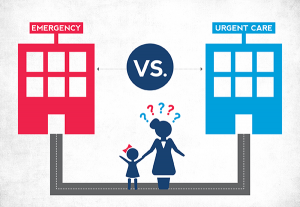Home / Blog / Top Benefits Telemedicine Can Offer Health Systems, Part 1 of 4
Benefits that health systems provide to their patients are only as good as their utilization. Whether it’s purchasing the latest FitBit or using an online portal to chat with their doctor, patients are using more health care technology.
More specifically, 74% of U.S. consumers have stated they would use telemedicine services. If there were a relatively inexpensive and easy to implement beneficial service that 74% of your patient census were willing to use that would ultimately benefit your health system in terms of reducing costs, increasing revenue, and helping with your population health strategy, wouldn’t you be willing to offer that?
In this blog post and the following 3 parts, we’ll go through 12 benefits your health system would receive by implementing and providing a telemedicine service to your patients.
Increasing Patient Census
 [icon name=”arrow-circle-o-right” class=”” unprefixed_class=””] Reach Patients Located in Rural or Underserved Communities
[icon name=”arrow-circle-o-right” class=”” unprefixed_class=””] Reach Patients Located in Rural or Underserved Communities
Patients who reside in rural communities will often experience obstacles that limit their access to the health care they need. Obstacles include lack of transportation, no ability to take paid time off work for lengthy commute and appointment times, budgetary restrictions in how much they can pay for healthcare, shortage of health care providers even outside of their rural community, inefficient healthcare providers, and the absence of communication skills to properly interact with healthcare providers, to name a few.
Telemedicine allows both small and large hospitals who are in the general geographic region of rural communities to provide members of those communities with high-quality care at lower costs and allows them the benefit of forgoing long commutes for unnecessary emergency department or urgent care facility visits.
In addition to urgent health conditions, health systems can also remotely monitor chronic diseases on a more regular basis rather than relying solely on in-person visits. This will help improve clinical outcomes across a variety of different health concerns.
Where a patient would decline medical care for lack of resources and where a health system would lose out on establishing a new patient, telemedicine steps in to bridge the gap and help increase patient census.
 [icon name=”arrow-circle-o-right” class=”” unprefixed_class=””] Capture Visits from Patients Who Would Otherwise Not See a Doctor
[icon name=”arrow-circle-o-right” class=”” unprefixed_class=””] Capture Visits from Patients Who Would Otherwise Not See a Doctor
In addition to those who won’t access healthcare because of barriers to service, there are many patients who otherwise can seek care from many different providers nearby to where they reside, but perhaps they aren’t the type to have an established primary care doctor. This could include patients who regularly travel for work, millennials who are known for frequenting urgent care facilities or EDs when care is needed at the last minute, or elderly patients who lack transportation. According to a survey by ZocDoc, 42% of millennials said they would most likely cancel a checkup because they were too busy, while 93% said they didn’t schedule preventative visits to the doctor at all.
By capturing these patients through convenient virtual health, you’re able to capture a new patient who can be referred to your internal network of providers for any follow-on care that might be necessary after an online or mobile consultation.
 [icon name=”arrow-circle-o-right” class=”” unprefixed_class=””] Compete With Local Urgent Care Facilities When Patients Need Urgent but Non-Emergency Care
[icon name=”arrow-circle-o-right” class=”” unprefixed_class=””] Compete With Local Urgent Care Facilities When Patients Need Urgent but Non-Emergency Care
According to the most updated number from the Urgent Care Association of America, there are nearly 7,100 urgent care facilities in the U.S. We know there are many consumers who frequent urgent care facilities as the source of their primary care, and there is good reason. Overall urgent care visits are less expensive, save time, and reduce the hassle of scheduling an appointment. Most primary care physicians cannot handle patients who have an immediate need to be seen.
Rather than investing the time and significant costs associated with building out a brick & mortar urgent care facility, including annual operational costs, associated with your hospital or health system, consider allowing your patients and members of your community to access an online urgent care that funnels patients back to your provider network. You’ll even have the option to outsource the care to a telemedicine provider’s own physicians to keep the additional workload off your current staff.
If you’re researching ways to increase patient census, providing telemedicine to your patients should be at the top of your list. This relatively low-cost addition to your provider network can have a great impact on your patient census while increasing hospital profitability.
Stay tuned for part 2 which will highlight different ways in which telemedicine can help reduce health care costs for your health system and its patients.
Ready to learn how RelyMD can help your health system increase patient census?
Submit the form below and we’ll be in touch soon.
[pardot-form width=”400″ height=”300″ id=”807″ title=”Web Form – Blog – Learn More”]
